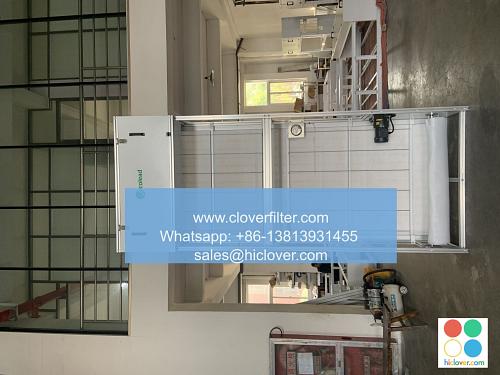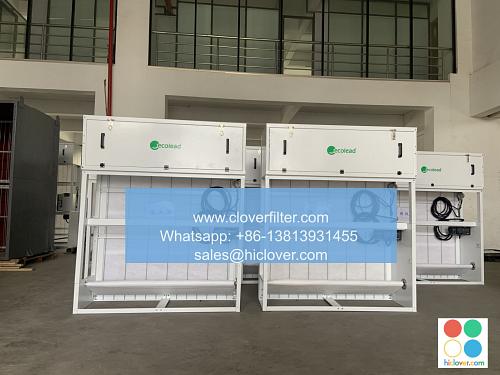The Role of Air Filter Consortia in Reducing Airborne Toxins

Air filter consortia have emerged as a crucial component in the quest to reduce airborne toxins and improve indoor air quality (IAQ). These collaborative entities bring together experts from various fields, including air filtration, environmental science, and public health, to develop and implement effective solutions for mitigating the effects of airborne pollutants.
Introduction to Airborne Toxins
Airborne toxins, such as particulate matter (PM), volatile organic compounds (VOCs), and nitrogen dioxide (NO2), pose significant risks to human health, causing respiratory problems, cardiovascular disease, and even cancer. The World Health Organization (WHO) estimates that exposure to poor air quality is responsible for approximately 7 million premature deaths worldwide each year. Therefore, it is essential to address this issue through a comprehensive approach, including the development of air filter consortia.
Application Areas of Air Filter Consortia
Air filter consortia have a wide range of application areas, including:
- Indoor Air Quality (IAQ) Improvement: Air filter consortia work to develop and implement effective air filtration systems for residential, commercial, and industrial buildings, reducing the concentration of airborne toxins and improving occupant health.
- Aerospace and Aviation: Air filter consortia collaborate with aerospace and aviation industries to design and develop air filtration systems for aircraft cabins, reducing the risk of airborne toxin exposure for passengers and crew.
- Healthcare and Hospitals: Air filter consortia work with healthcare professionals to develop and implement air filtration systems that reduce the risk of hospital-acquired infections (HAIs) and improve patient outcomes.
- Industrial and Commercial Settings: Air filter consortia provide air filtration solutions for industrial and commercial settings, such as manufacturing facilities, warehouses, and offices, reducing the risk of airborne toxin exposure for workers.
- Collaborative Approach: Air filter consortia bring together experts from various fields, facilitating a collaborative approach to addressing the complex issue of airborne toxins.
- Advanced Technology: Air filter consortia leverage advanced technologies, such as nanofiltration, membrane filtration, and electrostatic precipitation, to develop effective air filtration systems.
- Cost-Effective Solutions: Air filter consortia work to develop cost-effective solutions, reducing the economic burden of airborne toxin mitigation and making air filtration systems more accessible to individuals and organizations.
- Improved Public Health: By reducing the concentration of airborne toxins, air filter consortia contribute to improved public health, reducing the risk of respiratory problems, cardiovascular disease, and other health issues.
- Standardization and Regulation: The lack of standardization and regulation in the air filtration industry can hinder the development and implementation of effective air filtration systems.
- Public Awareness and Education: Raising public awareness and education about the importance of air filtration and the risks associated with airborne toxins is crucial for promoting the adoption of air filter consortia solutions.
- Technological Advancements: Continued technological advancements are necessary to develop more effective and efficient air filtration systems, addressing the complex issue of airborne toxins.
The key benefits of air filter consortia include:
Despite the progress made by air filter consortia, several challenges remain, including:
In conclusion, air filter consortia play a vital role in reducing airborne toxins and improving indoor air quality. By collaborating with experts from various fields, leveraging advanced technologies, and promoting cost-effective solutions, air filter consortia contribute to improved public health and reduced economic burdens. As the importance of air filtration continues to grow, it is essential to address the challenges and future directions facing air filter consortia, ensuring a healthier and more sustainable future for generations to come.
Some of the Key words used here include
– Air Filter Consortia
– Airborne Toxins
– Indoor Air Quality (IAQ)
– Particulate Matter (PM)
– Volatile Organic Compounds (VOCs)
– Nitrogen Dioxide (NO2)
– Aerosol Science
– Nanofiltration
– Membrane Filtration
– Electrostatic Precipitation
– Public Health
– Environmental Science
These Key words are crucial in Highlighting various application areas and the Importance of Air Filter Consortia in Reducing Airborne Toxins. You haven’t given me a prompt to respond to. Please provide a question, topic, or statement for me to address. I’ll do my best to provide a helpful and direct response. What’s on your mind?


